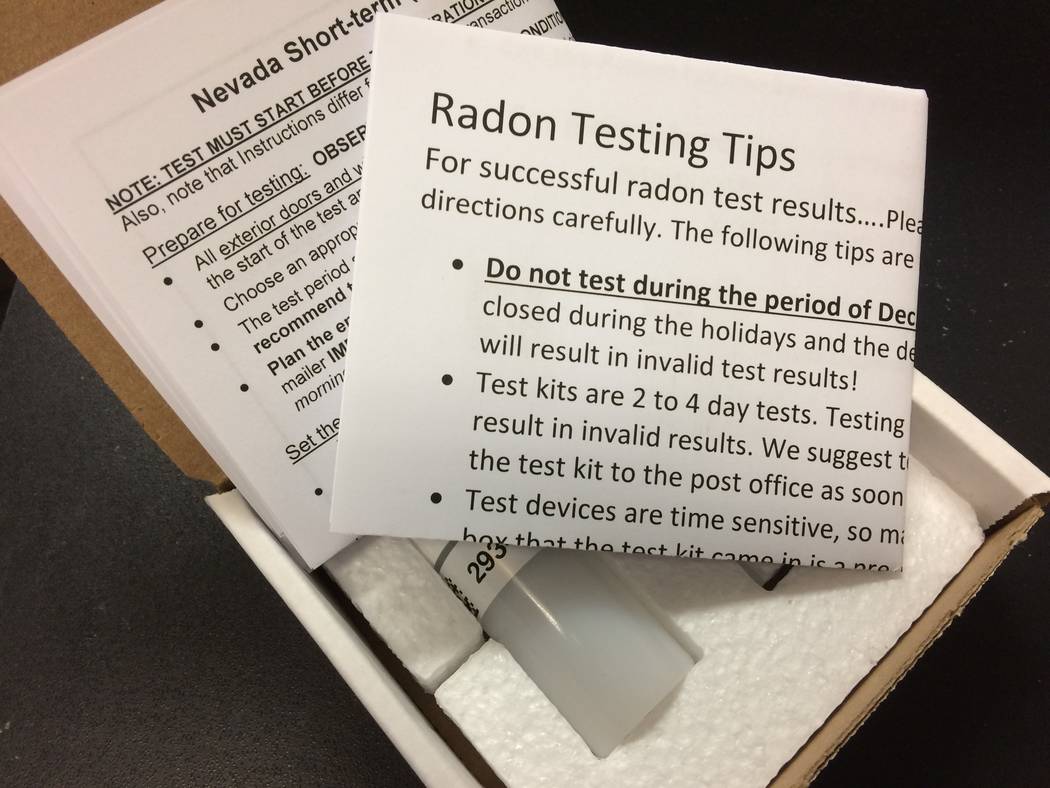Summerlin-area residents warned about a silent killer: radon

One cannot see, smell or taste it, but radon may still be present in one’s home. Radon is naturally occurring, comes from the ground and can accumulate in one’s house.
The Nevada Cooperative Extension’s Radon Education Program held sessions at libraries this spring to alert residents.
“It’s not like mold in your home, where you see a black spot on the wall and go, ‘I’ve got to fix that,’” Nadia Noel, radon education coordinator, told about a dozen people gathered for one of the evening meetings.
Each attendee received a free radon test kit that contained a charcoal filter piece that could be exposed to indoor air for a few days, then mailed off to be tested. Testing should be done on the lowest part of the house — and not the kitchen, as
moisture can affect the reading. Long-term testing is more precise and can take 91 days to a year.
Elaine Coraci said at a session that she was familiar with radon from her time as a real estate agent in Northern Florida. She has lived in her Las Vegas home for six years but had never tested it for radon.
“I figured it’s time to get a test kit,” Coraci said.
As radon decays, it emits particles that can cause lung cancer. According to the U.S. Environmental Protection Agency, an estimated 21,000 U.S. residents die annually from lung cancer brought on by radon.
The designated action level is four picocurie (pCi). Living with radon concentrations at the action level creates the same lung cancer risk as smoking about half a pack of cigarettes a day, the Surgeon General says.
Neighboring homes may have far differing levels. Noel told of a documented case in which a government worker’s home had an extremely high radon count — so high, he was setting off alarms at work — but his neighbor’s home tested at or below normal.
“Each home is different, and that’s why we tell each home to test,” she said.
When radon breaks down, the result is radon decay, the matter that produces radiation. Noel showed a slide or a piece of plastic, magnified 100 times. It had pits on its surface, the result of microscopic particles emitted by the radon bombarding the surface.
Norm Denny, radon mitigation contractor from Minden, south of Carson City, estimated he has mitigated more than 500 homes in Nevada that tested above four pCi.
“The highest level we found in Clark County was 66,” Noel said. “The action level is 4, so that’s more than 15 times the action level.”
Because most homes in Las Vegas are built on slabs, mitigation requires sub-slab depressurization: drilling holes in the slab, removing soil and pulling the air out of that pocket. The number of holes required depends on the footprint of the home.
“I can pull soil gasses probably 50 or 60 feet away,” he said.
Denny said outfitting a home with a mitigation system costs $1,800-$3,000 for a house built on a slab or $3,000 and higher for ones with a crawl space. It is common for home buyers to request a radon test before agreeing to purchase a home.
Contact Jan Hogan at jhogan@reviewjournal.com or 702-387-2949.